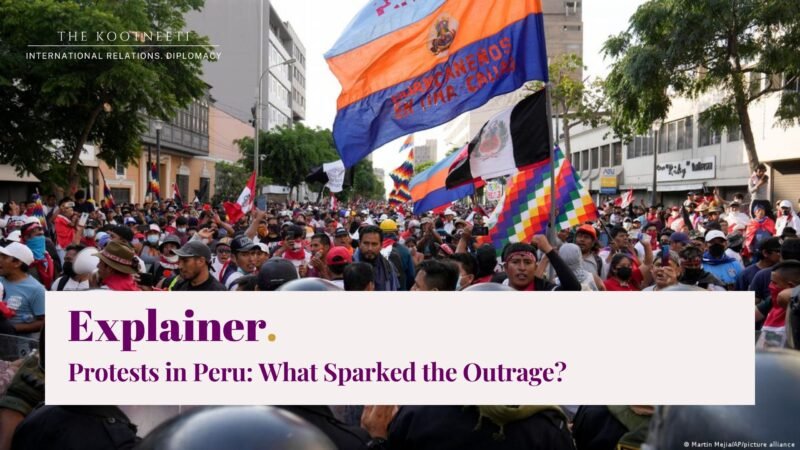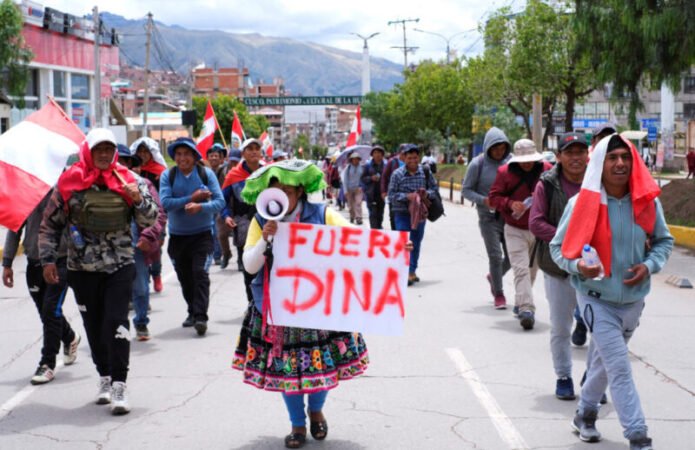Explainer: Protests in Peru – What Sparked the Outrage?

What’s Going On in Peru? Since former President Pedro Castillo was removed from office in early December, protests have erupted throughout the country. Demonstrators have blocked roads and temporarily shut down several airports in southern Peru. The indefinite closure of Machu Picchu, the famous Inca ruin and the country’s top tourist attraction, has led to a drop in tourism.
The demonstrations and roadblocks have become more intense in the impoverished southern regions, which have been impacted the most by the deadly violence. Close to 50 lives have been lost, with accusations that the police and army have used excessive force. The deadliest day of violence saw 17 fatalities in the city of Juliaca.
The protesters demand that President Dina Boluarte, Castillo’s vice-president who took over, resign and early elections be held. So far, Peru’s discredited congress has blocked any attempts to advance the elections, which has only strengthened the protesters’ determination. The debate on the matter may not resume until August.
At the beginning of February, the government declared a state of emergency in seven southern regions – Madre de Dios, Cusco, Puno, Apurímac, Moquegua, and Tacna – and extended it for a longer duration.

What Triggered the Current Situation?
Former President Pedro Castillo’s attempts to temporarily dissolve congress and avoid impeachment for moral incapacity, due to multiple corruption allegations, led to his downfall. He intended to rule by decree under emergency powers and called for new legislative elections.
However, his illegal takeover quickly unraveled as his top ministers immediately turned against him and denounced his actions. The armed forces, police, and even his own lawyer followed suit.
Castillo tried to seek asylum in the Mexican embassy but was arrested and charged with rebellion. Meanwhile, congress bypassed the debate and moved straight to impeachment, ultimately voting overwhelmingly to remove him from office.
Castillo’s vice-president, Dina Boluarte, was sworn in as his successor, while the former president was transferred to Barbadillo prison on the outskirts of Lima, where another former coup-monger, Alberto Fujimori, is also imprisoned.
Despite not being widely popular or skilled at governance, Castillo was seen as an ally by many in the poorer, predominantly Andean regions in their fight against poverty, discrimination, and inequality.
The death of several civilians has fueled the protests and roadblocks, especially among the poor and Indigenous population. Polls show that the majority of Peruvians support the main demands of the protesters: that Boluarte resign and early elections be held.
Was it a Self-Coup Attempt?
Many Peruvians referred to Castillo’s move as an attempted self-coup or autogolpe. In 1992, Fujimori made a similar announcement to temporarily dissolve congress, which led to the chamber being surrounded by tanks as he gained absolute power. He went on to arrest journalists and opposition leaders, censor newspapers and television stations, marking the beginning of his authoritarian regime that lasted nearly a decade.
Castillo repeated the same phrase, but his attempted self-coup was farcical, with political analyst Iván Lanegra stating, “Pedro Castillo was dictator for only two hours.” For many, it was a fitting end to his tumultuous 17-month term, which saw him go through 80 ministers and faced multiple allegations of corruption with six ongoing investigations by the country’s attorney general.
Constitutional experts consider Castillo’s announcement as an illegal power grab, but the governments of Argentina, Bolivia, Colombia, and Mexico have refused to recognize Boluarte as Peru’s legitimate head of state.

Why are the protests taking place?
The ousting of Castillo has sparked widespread anger and frustration among his supporters, particularly in rural areas and less privileged communities. They view his removal as a coup orchestrated by congress, and see Castillo, a former schoolteacher and son of illiterate peasant farmers, as the first president from their marginalized background.
The violence against protesters, with many fatalities resulting from police and military force, has only fueled the demonstrations, despite their impact on the economy through roadblocks.
Boluarte’s appointment as the seventh president in six years has only added to the already volatile political climate, compounded by the devastating effects of the Covid-19 pandemic, which has resulted in one of the world’s highest mortality rates in Peru.
“The public has lost trust in the government. Their problems are not being addressed,” says Óscar Cáceres, mayor of Juliaca. “When the population is tired, when they don’t have enough to eat, and when they witness acts of corruption within the government, what can we expect from the people?”
What’s the outlook?
The protests may subside as resources are depleted, but the underlying issues that sparked the unrest will persist. There remains a significant divide between the wealthy capital city, Lima, and much of the rest of the country, with many feeling neglected by the government and let down by the political class. Basic goods like food and fuel have become increasingly expensive due to roadblocks, exacerbating the already significant economic disparity.
Peru has long been plagued by a political instability-economic stability paradox, but that may soon change. The country’s fragile political system is likely to deter foreign investment, which the economy heavily depends on, and the situation is expected to deteriorate further.
The widely unpopular congress is seen by many as a hub of corruption and self-interest, with Peruvians united in their rejection of it. Until the root causes of the unrest are addressed, the situation in Peru is uncertain.


















